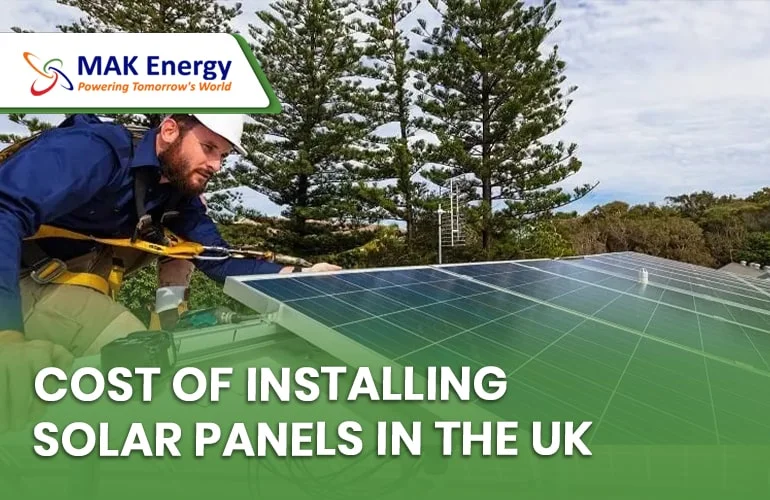Have you ever considered generating energy from your room’s window, car’s windshield, or a building’s glass facade? It may sound unusual, but it is now possible with transparent solar panels. The University of Michigan first developed transparent solar panel in 2014, though with a less efficiency rate of only 5 percent, considerably lower than traditional solar photovoltaic cells.
You’re probably aware that traditional solar panels absorb sunlight and convert photons into energy(electrons). However, as sunlight passes through transparent materials, it has been historically challenging to initiate the electricity production process, mainly because these materials cannot capture sunlight, and thus, cannot start energy production. Transparent solar panels offer a solution to this issue. These panels employ materials that can still produce energy, despite allowing sunlight to pass through the glass. However, their efficiency is somewhat lower. This article will provide a comprehensive overview of transparent solar panels, explaining what transparent solar panels are, how they work, and the different types available.
With both solar panels and transparent solar panels available in the market, you have the opportunity to acquire the finest solar PV system in the UK. If you’re seeking a customized solar PV system that suits your specific requirements, we are here to assist you. At MAK Energy, we offer a complimentary, no-obligation quote, along with free online survey services and personalized solutions tailored to your needs. All you need to do is reach out to us and relish the freedom of generating your own electricity.

What Are Transparent Solar Panels?
Transparent solar panels, also known as see-through solar cells or solar windows, have earned significant attention in the field of solar technology due to their unique characteristics. They resemble the transparent glass commonly used for windows in homes, buildings, and car windshields. These panels absorb the invisible light from the sun to produce energy while still allowing sunlight to pass through and provide natural light to the rooms. The fundamental concept behind transparent solar panel lies in its construction with materials that can capture and utilize specific segments of the solar spectrum while still permitting visible light to pass through the room or building. The technology employed in these panels is quite sophisticated. Instead of relying on traditional silicon-based photovoltaic cells, transparent solar panels typically utilize organic photovoltaic or thin-film technology.

How Do Transparent Solar panels work?
Transparent solar panels, unlike traditional solar panels, absorb non-visible light such as ultraviolet and infrared wavelengths. These absorbed wavelengths are converted into electricity by a layer of photovoltaic cells while allowing visible light to pass through. Transparent solar panels are constructed using various materials like organic polymers, metal oxides, and quantum dots. Inside the panels, special materials capture the absorbed light energy, releasing electrons and generating an electric current. Despite this light absorption, the panels maintain their transparency, allowing natural light to illuminate the space. Although their efficiency is still improving, transparent solar panel hold promising potential for powering our devices and buildings in a stylish manner.
Benefits of Transparent Solar panels
- Transparent solar panels can generate electricity while still letting light through. This makes them a more versatile option than traditional solar panels, which can block out a significant amount of light.
- With transparent solar panel, the angle of the sun is not a crucial factor in generating electricity.
- They can be used to recharge the batteries of mobile devices using ambient light, which is an appealing feature for consumers.
- Transparent solar panels can be seamlessly integrated into windows, building facades, and other glass surfaces. This opens up a world of possibilities for incorporating solar power generation into architectural designs without compromising aesthetics.
- In densely populated urban areas, where rooftop space may be limited, transparent solar panels offer an alternative means of harnessing solar energy. They can turn vast expanses of glass into energy-generating surfaces, maximizing solar potential in cities.
Types of Transparent Solar Panel
Although transparent solar panels are not as commonly used as traditional solar panels, they do come in a variety of types. Let’s explore the two main types:
Partial Transparent Solar Panels
Heliatek GmbH, a German company, has made significant strides in the development of partial transparent solar panels. These panels consist of two main components: a transparent layer and a layer of photovoltaic cells. The transparent layer allows visible light to pass through, while the photovoltaic cells convert the invisible ultraviolet and infrared light into electricity.
It’s important to note that these panels have a unique characteristic—they can only absorb a portion of the sunlight they receive. Approximately 60% of the total light is allowed to pass through the panels. Consequently, their efficiency currently stands at 7.2%, which is lower than that of traditional solar panels.
Fully Transparent Solar Panels
Fully transparent solar panels, in their current state, are unable to capture visible sunlight for energy production. However, researchers at Michigan State University have made strides in making transparent solar panels function similarly to conventional solar panels. They have employed a different approach, capturing invisible sunlight such as infrared and ultraviolet rays, to enable energy generation. They have utilized an organic salt that can absorb invisible light and convert it into electricity. The efficiency of fully transparent solar panels is currently only 1%, with a potential of reaching 5%, which is significantly lower than traditional solar panels. However, in 2021, researchers at Michigan State University developed transparent solar panel with an efficiency of 3.7%. It is expected that in the near future, transparent solar panels will have the ability to work as efficiently as conventional solar panels.
Do Transparent Solar Panel Produce Electricity or Energy?
Transparent solar panels are indeed capable of producing energy and electricity as they are specifically designed to absorb invisible light, including infrared and ultraviolet rays. While traditional solar panels also serve the same purpose, transparent solar panel operate using a different working methodology. The energy captured by transparent solar panels is converted into electricity, which can be utilized to power a variety of devices and systems in homes and businesses. Hence, transparent solar panel effectively generate energy in the form of electricity, offering versatile applications and sustainable power sources for various needs.
Summary
Transparent solar panels represent a cutting-edge technology that, although still relatively uncommon in commercial applications, holds immense potential for the future. Their unique ability to generate energy while allowing visible light to pass through makes them a promising solution. The question of what are transparent solar panels and how they operate is increasingly being raised by individuals curious about this technology. The answer lies in their similarity to traditional panels, yet they incorporate the latest advancements that enable sunlight to pass through the glass, providing natural light to the room while simultaneously harnessing the power of invisible light, such as infrared and ultraviolet rays, to generate electricity. With these capabilities, transparent solar panels are poised to make a significant impact in the renewable energy landscape.





